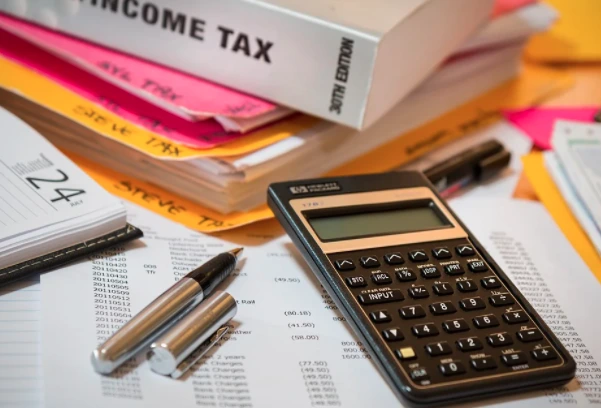You are a taxpayer of the country, and coming to be it, you are bound to know a few things. Well, firstly, if you are getting income, you fall under paying taxes. Also, taxes are not always a bad thing, and by now, you mostly know it all goes to betterment. Let’s look at something that would make you feel good about being a taxpayer.
Who is a Taxpayer?
“The taxpayer: That is someone who works for the federal government but does not have to take a civil service examination.”
–Ronald Reagan.

Feel good yet? Obviously, you do. But, coming back to the subject. What are tax brackets? Individual taxpayers in India pay income tax based on a slab structure. A slab system means that different tax rates are set for different income groups. It means that the tax rates continue to rise as the taxpayer’s income rises.
This sort of taxation allows the government to have progressive and equitable tax systems. These income tax slabs are subject to change with each budget. These slab rates differ for different types of taxpayers.
What is Income Tax Brackets?
In India, where people earn a wide range of incomes, levying a tax on everyone at the same rate would not be a fair policy.
As a result, the Act segregates income categories and assesses tax at different rates based on the segregation, which means every taxpayer needs to pay his taxes each quarter or yearly by advance tax due dates. As a result, these groups are referred to as tax brackets, and they are.
Income Tax Slab Rates for the Financial Year 2021 – 2022
- Rs 0.0 – Rs 2.5 Lakhs = NIL.
- Rs 2.5 lakhs- Rs 3.00 Lakhs = 5% (tax rebate u/s 87a is available).
- 3.00 lakhs – Rs 5.00 Lakhs = 5% (tax rebate u/s 87a is available).
- 5.00 lakhs- Rs 7.5 Lakhs = 10%.
- Rs 7.5 lakhs – Rs 10.00 Lakhs = 15%.
- Rs 10.00 lakhs – Rs. 12.50 Lakhs = 20%.
- 12.5 lakhs- Rs. 15.00 Lakhs = 25%.
- > Rs. 15 Lakhs = 30%.
Mentioned above are the new tax brackets for the financial year. Are you still confused? Let’s dive a little deeper into the topic.
- There is no tax burden for persons with an annual income of less than 2.5 lakh rupees.
- A tax of up to 5% on income falls into the tax rate of 2.5 to 5 lakh rupees based on their age group.
- A 20% tax is levied on income in the tax category of 5 to 10 lakh rupees.
- Individuals earning more than 10 lakh rupees are subject to a 30% tax.
Understanding your tax due is not difficult if you know how to use tax calculators. You can even seek professional assistance to determine your income tax due.
Heads of Income According to Tax
- Salary.
- Profits and Gains from Profession and Business.
- Income from a House Property.
- Capital Gains.
- Income from Other Sources – FD, Savings, and more.
When your income from these sources comes under the tax brackets mentioned above, your taxes are tallied based on it.
To come to your total income for a financial year, you need to declare all of the income that you have earned under these heads and subtract the tax deduction that you would be eligible for based on the math.
If the whole tax you pay exceeds your tax liability, you can file for an income tax refund, and guess what, you can do it online.
How to File an Income Tax Return?
Step 1: Navigate to the e-filing website at https://www.incometax.gov.in/iec/foportal.
Step 2: Create an account or log in to e-file your returns.
- If you have previously registered on the site, click the ‘Login’ Here’ option.
- If you have not yet registered on the site, click the ‘Register’ Yourself’ option.
Step 3: Select ‘Taxpayer,’ then enter your PAN information and click ‘Validate.’ Then, press the ‘Continue’ button.
Step 4: Include information such as your name, residence, gender, residency status, date of birth, and so on.
Step 5: Enter your email address and registered phone number.
Step 6: Once the form has been completed, click ‘Continue.’
Step 7: Verify your information, and a 6-digit One Time Password (OTP) will be given to your registered cellphone number and email address.
Step 8: Enter the OTP and follow the instructions to properly complete the registration process.
Step 9: Once the OTP has been validated, a new window will open in which you must verify the information you have provided. If any of the information provided is wrong, you can edit it, and another OTP will be delivered to authenticate the change.
Step 10: The last step will be to create a password and a secure login message.
Step 11: After clicking ‘Register,’ you will receive an acknowledgment message confirming that the registration procedure is accomplished.
Conclusion
Now that you know how to get around income tax brackets, you would know how much you are payable and what to do when you need to file for ITR. It is not all that hard, is it? It couldn’t be. Because once you know the basics of your taxes, you can get to things easier than you think.




